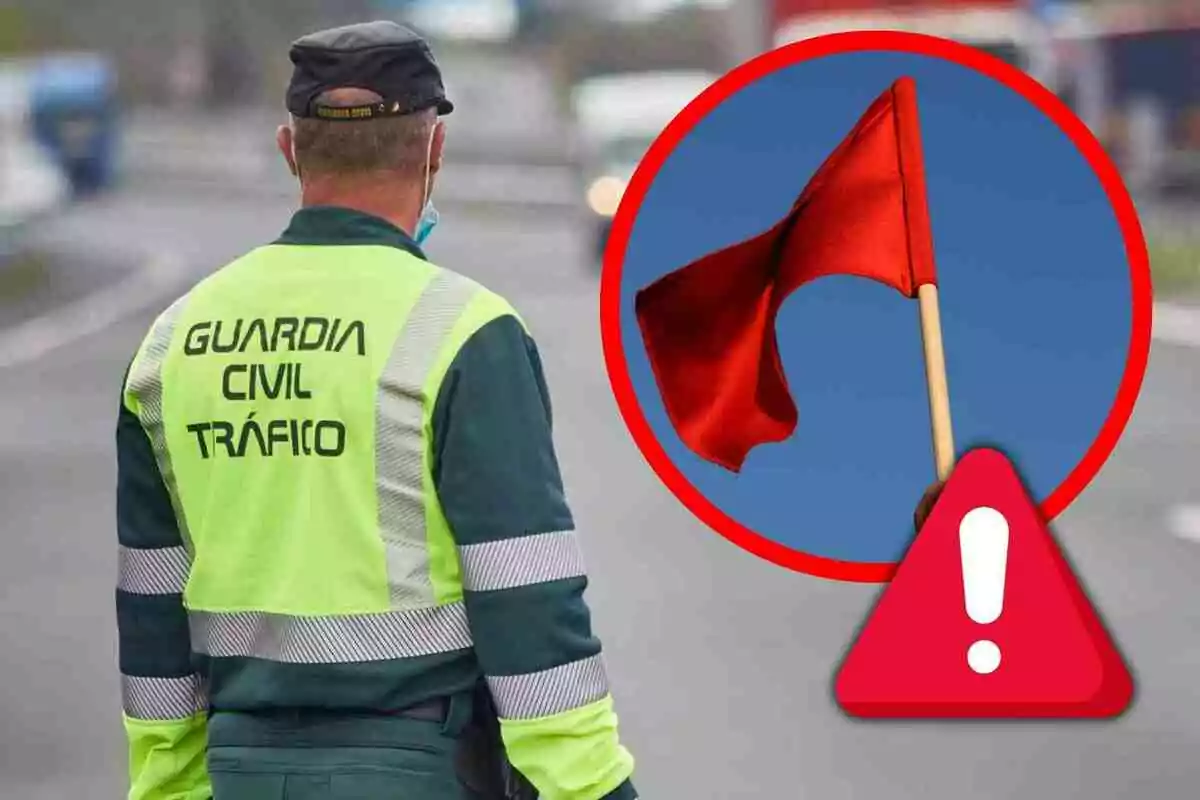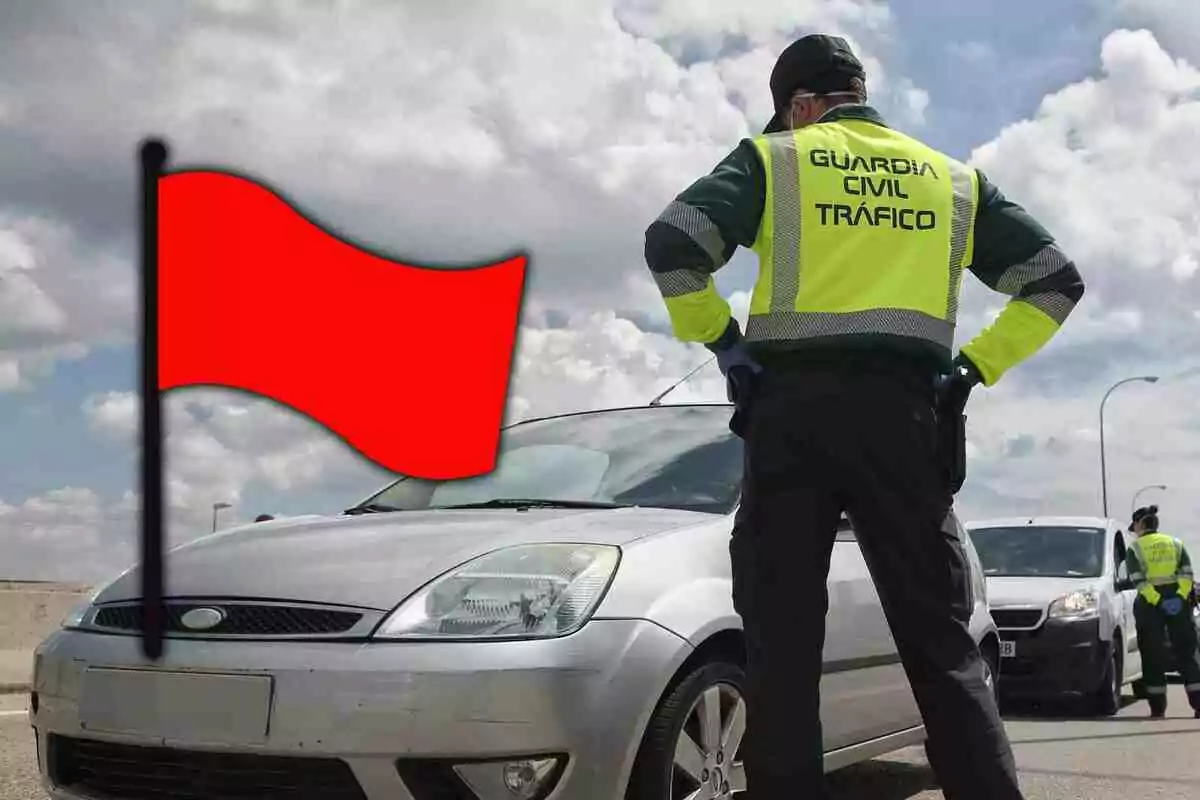On the road, it's not all about vertical signs, lights, or road markings. Sometimes, the most important information comes directly from a Guardia Civil officer. Although many drivers are unaware of them, the flags that officers may display have a legal value equal to or greater than any traffic sign.
Among these little-known codes, one stands out in particular: the red flag. It's not often seen, but when it appears, it does so with a clear and very important purpose. Knowing its meaning can help you avoid fines and, above all, help you act correctly in emergency situations or during special operations.

What the Guardia Civil's red flag means on the road
If a Guardia Civil Traffic officer displays a red flag, the message is direct and unequivocal. The road is temporarily closed to traffic. That is, at that moment, no vehicle may continue on that road unless it's escorted by the officers themselves.
This signal is usually used in special operations, temporary traffic closures due to emergencies, the passage of official convoys, or in certain situations where traffic must be stopped completely to ensure safety. Guardia Civil, especially its motorcycle units, uses this flag as a clear and immediate tool to order vehicles to stop.
How officers act when displaying a red flag
The use of the red flag usually doesn't come alone. Officers usually reinforce it with very specific gestures. If the officer is on foot, it's common for them to raise both arms horizontally to ask us to stop. If they move them up or down, they're requesting that we reduce speed. In addition, they may accompany these gestures with whistle blows: a short, quick one means "stop," while a sustained one means "continue."

What happens if you don't respect the Guardia Civil's red flag
Ignoring this signal isn't a simple anecdote. Failing to comply with a direct order from a Guardia Civil Traffic officer carries financial penalties and loss of driver's license points. Specifically, the fine can reach €200, and depending on the officer's assessment and the seriousness of the offense, it may involve the loss of 2 to 4 points.
In addition, endangering an operation on the road, interrupting an official convoy, or disobeying in an emergency situation may be considered a serious offense. That's why, even if you don't know this signal, you're required to respect it just like any other traffic instruction.
It's true that the red flag isn't something you see every day. However, precisely because of its rarity, it can cause confusion among drivers when it appears. That's where the risk lies. Understanding that Guardia Civil uses this code to protect road users and keep traffic safe is key.

